August 29, 2015 | Posted in HISTORIC PLACES, TRADITIONAL ART AND PAINTING | By sockii
Leonardo da Vinci’s Last Supper: Facts, Visiting and Ticket Information
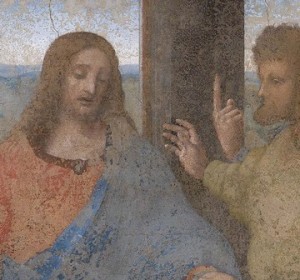
Close-up section of “The Last Supper” by Leonardo Da Vinci. Source: Wikimedia Commons.
Leonardo da Vinci‘s “The Last Supper” is one of the most recognizable works of religious art in the world. Da Vinci’s interpretation of the subject of Christ and the Apostles has enraptured viewers and art historians for centuries, despite its frail condition and advanced state of deterioration. Through miracles of human and perhaps divine intervention, “The Last Supper” survives today against all odds and continues to fascinate people worldwide.
To see da Vinci’s “Last Supper” in person in Milan, Italy is something every art lover should set out to accomplish, at least once in her or her lifetime. No matter how familiar you may think you are with this image from countless photos, television programs, and sensational stories like Dan Brown’s The Da Vinci Code, seeing “The Last Supper” in person is an experience you will never forget. Yet many tourists and travelers coming to Milan planning to see da Vinci’s masterpiece do not realize that obtaining tickets to view it are not quite so simple as showing up at Santa Maria delle Grazie and expecting immediate entry.
Here you will find a brief introduction to da Vinci’s masterful image of “The Last Supper” as well as detailed information on planning a visit to see it in person: how to obtain Last Supper tickets, where the Last Supper is located, and what you can expect when you arrive there. I have also included select links where you can learn more about da Vinci’s work, and attempt to unravel the painting’s many secrets and mysteries.
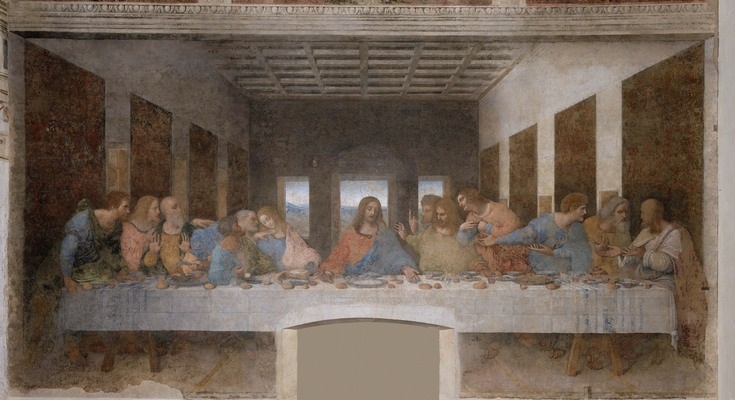
“The Last Supper” Basic Facts and History
About Leonardo da Vinci’s Masterpiece in Milan
Leonardo da Vinci was commissioned by Ludovico Sforza to paint “The Last Supper” near the end of the 15th century. It is 15 feet by 29 feet in size and covers the entire end wall of the dining hall of the monastery at Santa Maria delle Grazie in Milan, Italy. At the time that Leonardo painted “The Last Supper,” the room was to be the mausoleum for the powerful Sforza family. Leonardo worked on and off on the fresco from 1495 until 1498, but he did not use traditional fresco methods of painting into wet plaster.
While traditional fresco painting is quite durable and can easily last for centuries, the technique does not allow for the refinement and fine detail Leonardo preferred in his work. Hence, he sealed the stone wall with a layer of pitch, gesso and mastic, and painted onto the sealing layer with tempera. This unfortunate decision by da Vinci lead to the painting beginning to flake away from the wall in only 20 years time. Since then, preserving Leonardo’s work has been a continual struggle for restorers, and botched early attempts at restoration and repainting are only a few of the challenges “The Last Supper” has faced for survival.
The refectory was used as an armory by French troops in the late 1800s, who threw rocks at the fresco and otherwise attempted to deface it. The center section was badly damaged in a mistaken attempt to try to remove the fresco from the wall in 1821, before it was realized by those undertaking the effort that it was not a “true” fresco. To make matters even worse, on the night of August 15, 1943, bombs dropped by Allied British and American planes during World War II destroyed nearly all of the refectory – yet by some miracle the wall holding “The Last Supper” survived, protected only by sandbags.
It would be the early 1950s before efforts would be undertaken to stabilize the work once again. By the 1970s the fresco was in such poor condition that it was closed from public view for 21 years as a major restoration effort was undertaken by Pinin Brambilla Barcilon. This effort sought to correct changes and damage done by previous misguided restorations, to stabilize the work as much as possible, and subtly re-paint in what could be accurately viewed as Leonardo’s original intentions with watercolor, not permanent paint.
“The Last Supper” was once again opened for public view in 1999, although under strictly controlled conditions, with reservations and limited viewing times for visitors.
Read more about The Last Supper at Wikipedia…
Obtaining Tickets for “The Last Supper”
Where and How To Buy Last Supper Tickets
Reservations are absolutely required to see “The Last Supper” today. You cannot simply show up at Santa Maria delle Grazie the day you want to visit – nor even a few days before. Indeed, demand is typically so high – and large tour groups buy up so many tickets in advance to resell at a premium to their clients – that you should ideally plan your visit to “The Last Supper” several months in advance (yes, I’m being serious.) Only 25 visitors are allowed to view “The Last Supper” for exactly 15 minutes at a time, to protect against further deterioration of the image.
You can book tickets directly either by phone or by the official website at http://www.cenacolovinciano.org. The website is not especially user-friendly, however, and is not regularly updated with reservation cancellations. However, for those who like the convenience and ease of on-line booking – and being able to easily print out a reservation confirmation, you can do so via this route. Many would recommend reserving by phone instead by calling 02-8942-1146 (or from the United States, 011-39-02-8942-1146). The booking office is open Monday through Friday from 9:00 – 18:00, Saturday 9:00 – 14:00. Keep trying if the number is busy and press 2 for an English-speaking operator. The process is simple, quick (about 2 minutes) and you’ll be given an appointed entry time and confirmation number – you’ll pay for your reservation when you arrive. Either way you book, the cost is 8 Euros (6.50 admission plus 1.50 reservation fee.)
“The Last Supper” is open for viewing Tuesday – Sunday from 8:15 – 18:45, closed Mondays.
Obtaining Last Minute Entry Tickets to the Last Supper
So, what to do if you are unprepared, and are in Milan without making reservations to see “The Last Supper”? Well, you do have a few options to try. Check with your hotel concierge first; they may have connections with tour groups, and if you don’t mind paying a premium price for the convenience, they might be able to get you in on a viewing time. You can also try showing up at the reservation desk at Santa Maria delle Grazie first thing in the morning to see if there are any last minute cancellations or tickets available, but this is chancy and could waste you significant time lingering about. Also, travel guru Rick Steves states in his guide to Milan that the tour bus operators Autostradale and Zani Viaggi book out the 12:00, 12:15, 17:30 and 17:45 slots entirely daily, speculating on filling their buses with tourists. If they don’t, they will look to release the tickets each morning between 10:30 – 11:00 and 15:00 – 16:00 so you can try to obtain those extra tickets at Santa Maria delle Grazie at those times.
Viewing The Last Supper in Milan
What to Expect When You Arrive at Santa Maria delle Grazie
Santa Maria delle Grazie is located a short distance outside of Milan’s historic center, so plan on sufficient time to get there via foot, taxi or Metro. The church does not look like much from the outside, compared to some of the other great churches of Milan and Italy. Look for the entryway marked “Cenacolo Vinciano” as that is where you will find the ticket counter to pick up your reserved tickets to see “The Last Supper.”
Arrive at least 30 minutes before your scheduled entry time to make sure there are no problems with your tickets – and to give yourself time if you are in line behind confused, unprepared tourists who did not reserve in advance and want to argue with the ticket agents about getting entry (they won’t be able to. The agents will only hand them a piece of paper with the official website address and phone number to contact.) Present your reservation receipt and the photo ID of the purchaser of the tickets to collect them. Make sure you receive the same number of tickets that you reserved before walking away.
There is then a small waiting area with limited seating where you can wait for your entry time to be called through. Tickets will be collected about 5 minutes before your scheduled entry time and DO NOT BE LATE. This is not like a museum or special exhibit where you can be a few minutes behind and still get in. You will go through two separate dehumidification chambers to remove excess moisture from your clothes and skin before finally allowed entry to view “The Last Supper” – for precisely 15 minutes and 15 minutes only.
A low barricade in front of the fresco will keep viewers at a protected distance from Leonardo’s masterpiece, but you will still be close enough to see his wonderful work clearly and vividly. Do not forget to step back, however, to fully appreciate his masterful use of perspective, the sense of life and movement he created in the work. Of course, no photography is not allowed inside the room and one should be courteous, while there, toward the other ticketed visitors.
An announcement will tell you when your 15 minutes are almost up, and there is no lingering allowed. You will be shooed out by the guards if you are slow to move, as the next group of visitors are ready to be admitted. There is then a small gift shop and restroom facilities you can use before exiting Santa Maria delle Grazie.
Visiting “The Last Supper” at Santa Maria delle Grazie in Milan
My Personal Reaction to Leonardo da Vinci’s Masterpiece
I had the opportunity to view “The Last Supper” in person during a June 2011 trip to Milan, Italy and was unprepared for how much seeing the image would affect me. As an artist and lover in particular of classical, Renaissance Italian art, I was of course quite familiar with Leonardo’s work and had spent considerable time looking at images of “The Last Supper” in books and video programs. I thought I knew what the fresco looked like, yet simply stepping into the refectory and experiencing it in person was another matter entirely.
“The Last Supper” first impacts the viewer with its sheer size. It is almost impossible to take in the entire composition, except from a distance, where the power of da Vinci’s mastery of perspective truly hits you. There is an explosive force to the image, with Christ at its center and the Apostles recoiling in shock as he has just told them one of their number will betray him. Also powerful is the impact of color in the work, even in its deteriorated condition, and also the incredibly emotional faces of the Apostles. Shock, anger, sadness, confusion…we read each of these emotions in their expressions, gestures and positions clearly, again even with so little of the original fresco remaining. Whatever your religious conviction – or even lack thereof – you cannot help but feel the impact of the powerful imagery created by da Vinci and be captivated, entranced, and perhaps even spiritually overwhelmed.
Fifteen minutes in the refectory pass far too quickly. For a true art lover, I would recommend attempting to buy tickets for multiple viewing times for “The Last Supper” during your visit to Milan, if at all possible. After seeing it once, you will likely be desperate for just a few more minutes to stand in the painting’s presence.
Last Supper Resources On-Line
Where To Learn More About Da Vinci’s Fresco Masterpiece
These links are just few of many dedicated to examining “The Last Supper” by Leonardo da Vinci. Explore some of the curious claims made about the painting through the years, as well as learn more about its composition and restoration efforts.
- Cenacolo Vinciano – Official Website The Official Website for “The Last Supper.” This is the site you need to use in order to purchase Last Supper tickets on-line.
- Da Vinci’s ‘Last Supper’ in Vivid Detail Media company Leonardo3 recently completed a digital “restoration” of “The Last Supper”, in order to visualize what da Vinci’s original work must have looked like. Here you can see their work for yourself.
- The Last Supper in High Resolution Zoom-in on an ultra-high resolution image of The Last Supper.
- The Last Supper – A Study of the Painting by Leonardo Da Vinci Web article looking in detail at the work, and also examining some of the theories behind the imagery.
- Leonardo Da Vinci’s ‘The Last Supper’ Reveals More Secrets Looking at the food – yes, the food – included in the imagery of “The Last Supper” by da Vinci.
- Restoration of The Last Supper Examination of the restoration efforts used to preserve da Vinci’s masterpiece.
- Musician Claims Music Notes Coded into da Vinci’s “Last Supper” Is the Last Supper actually a musical composition? That was the claim made by a musician in 2007. Read more about the fascinating possibility at this news link.
Planning a Trip to Milan?
Be sure to check out my extensive travel guide to the city and surrounding region…
Related articles across the web
Related posts at Spacial Anomaly
Table of Contents
- Leonardo da Vinci’s Last Supper: Facts, Visiting and Ticket Information
- “The Last Supper” Basic Facts and History
- Obtaining Tickets for “The Last Supper”
- Viewing The Last Supper in Milan
- Visiting “The Last Supper” at Santa Maria delle Grazie in Milan
- Last Supper Resources On-Line
- Planning a Trip to Milan?
sockii
sockii is just your typical Jane-of-All-Trades who never has enough time in her day for all of her projects. She has written for many websites online including Squidoo, Zujava, Yahoo! Contributors Network, HubPages and Wizzley. She has been attending and vending at science fiction and media conventions for over 15 years, and for several years ran an art gallery and jewelry store in Philadelphia. Today she is happy to be living in South Jersey with her partner David and their 6 cats. Sockii is a member of several affiliate sales programs including Amazon Associates and Viglink. Products from these services may be advertised on her posts and pages to generate sales commissions.
Leave a Reply
*
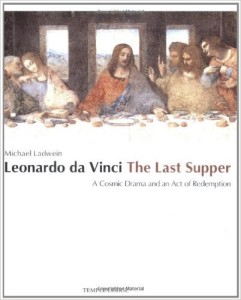
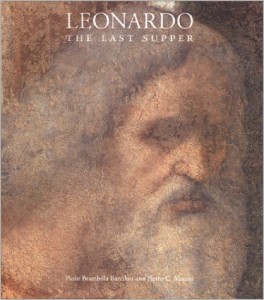
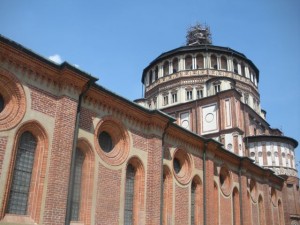
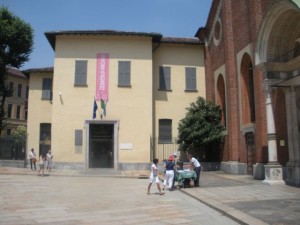
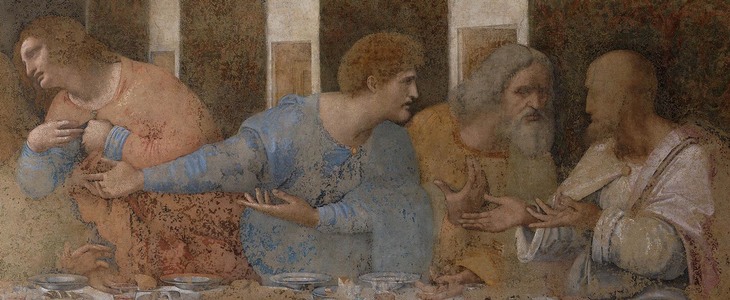
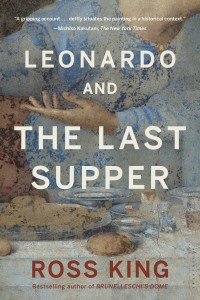



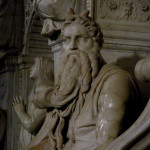
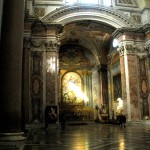
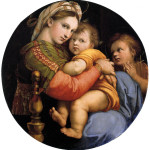
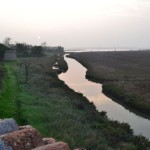








Be the first to comment.